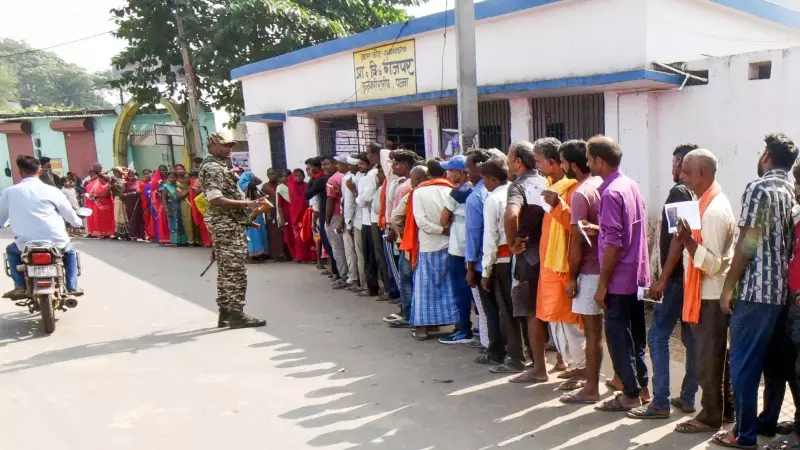
Historic Voter Participation in Bihar Elections
Bihar has witnessed an unprecedented surge in voter participation during the recent assembly elections, recording a remarkable 66.91% turnout across two phases of polling. This represents the highest voter participation since the state's first assembly elections in 1951 and marks a significant 9.62 percentage point increase compared to the 57.29% turnout recorded in 2020.
Historical Pattern: Higher Turnout Often Brings Change
Political analysts have long observed that in states with largely bipolar electoral contests like Bihar, increased voter turnout typically indicates potential government change. Historical data from Bihar's electoral history strongly supports this pattern.
Over the past 17 assembly elections in Bihar, there have been five instances where increased voter turnout led to a change in government. The first significant change occurred in 1967 when the Jan Kranti Dal unseated the Congress after seven terms, coinciding with a 7.04 percentage point increase in turnout to 51.51%.
The pattern continued in subsequent elections. In 1977, the Janata Party came to power ending two consecutive Congress terms, though this particular change occurred despite a 2.28 percentage point decrease in turnout. The Congress returned to power in 1980 with a substantial 6.77 percentage point increase in voter participation.
The Nitish Kumar Era and Recent Trends
The most dramatic turnout-related political shift in recent history occurred in 2005. In February that year, a massive 16.07 percentage point fall in turnout to 46.5% resulted in a hung assembly. Following President's Rule, fresh elections in October saw turnout drop further to 45.85%, leading to JD(U)-BJP alliance coming to power and Nitish Kumar becoming chief minister for the first time.
Since the October 2005 elections, voter participation has consistently increased - from 52.73% in 2010 to 56.91% in 2015 and 57.29% in 2020. The current record-breaking 66.91% turnout has both the ruling NDA and opposition Mahagathbandhan claiming it works in their favor.
In the 2020 elections, the closeness of results combined with this massive surge in voting is expected to be decisive. Particularly significant are the 132 seats where voter turnout increased by more than 10%, with 20 constituencies recording an absolute voter turnout increase exceeding 15%.
The Belsand assembly seat recorded the highest increase at 17.86%, followed by Mohiuddinnagar at 17.84% and Jhajha at 17.81%. In the 2020 elections, among these high-increase seats, JD(U) had won 7, BJP 5, RJD 5, Congress 1, with one seat each going to HAM(S) and an Independent.
Historical precedent from previous elections shows that constituencies with significant turnout increases often witness changes in representation, making these areas particularly crucial in determining the final outcome when results are declared on Friday.





